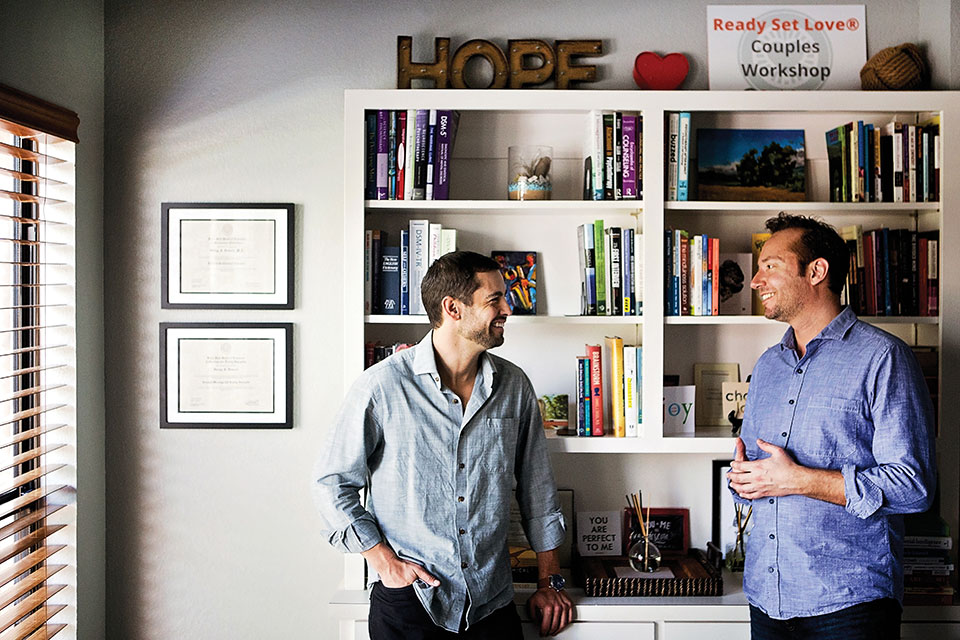Relationship Health Part 2: How to Deepen Connection

In this three-part series, we explore some powerful steps you can take to up your relationship game!
Last issue, we explored ways to increase your relationship health and emphasized that relationship health is a key factor in overall physical health and well-being—just as much as exercise and nutrition! In Part 2, we’re going to focus on connection as the key ingredient to a highly fulfilling relationship. We often think of communication is the key to a healthy relationship, but modern neuroscience begs to differ. Connection in relationships is largely determined by lower-level circuits in the brain and nervous system, not the higher areas that engage in complex thought and reasoning. Here are some powerful tips to help you deepen your connection—and therefore the overall health—of your most important relationships!
1. Connection thrives on a sense of safety.
In fact, many relationship scientists theorize that humans largely get into relationships in order to feel more safe and secure in the world, and not so alone. Safety and security are measured by simple parts of the brain and nervous system. Those parts don’t understand philosophy, or speak English (or any other modern language). To speak “connection” to the nervous system, scoot in a little closer to your partner when you talk; use touch, like a hand on his or her arm or shoulder; or hold hands when you talk. Make a little more sustained eye contact, and speak with your tone of voice more than your words. Put it all together (and avoid those delays where your partner asks you a question and you don’t look up from your email for three seconds), and you’re speaking connection to the nervous system!
2. Did you know the process of how you talk is more important to relationship health than what you’re talking about?
A powerful way to work out your relationship health muscles is to focus on the process of your interactions more than the content. Focusing on the process simply means paying attention to how it feels to interact, moment by moment. Many of us put the focus on what we want to say or debate, but words and concepts can easily stress the nervous system. When you want to feel connected, slow down, check in with one another on how it’s feeling to talk, and switch up how you’re interacting if needed. Propose going on a walk to change the scenery (and your state), or rubbing each other’s feet while you talk. Once the process of interacting feels great, the content will make much more sense!
3. Don’t underestimate the power of emotions to connect!
Many of us dismiss emotions as irrational artifacts from the right hemisphere of the brain, yet they are supreme in their connecting ability! Both positive and negative emotions can help you deepen your bond, but only if you respect them, validate them, and play along. Positive emotions seek amplification, the process of having others join us in those uplifting emotions so we can celebrate feeling great together. “Negative” emotions, like anger and sadness, need to be expressed and shared in order for us to feel like others “get” us, even if they come out a little exaggerated. They seek validation and empathy. Use vulnerability to express both positive and negative emotions by owning your experience. Be careful not to project all your feelings on others or blame others too much for how you feel. A masterful move is to use a positive invitation to ask your partner for support. Something like, “Hi, sweetheart, you’re so good at making me feel better when I’m down. Would you spend some time talking with me, holding me? It would mean a lot.” Then, even our frustration has a healthy process in which to be explored! afm
Stay tuned for Part 3: Practicing Awesome Relationship, in the next issue!
John Howard and Peter Craig are therapists at Austin Professional Counseling. They use the latest science to help their clients win at relationships and at life. John is the Founder of Ready Set Love® , a 12-week couples training program you can take online. Peter is a sponsored triathlete on Juiceland’s Dream Team and helps individuals and couples with authenticity, connection, and healthy eating.






